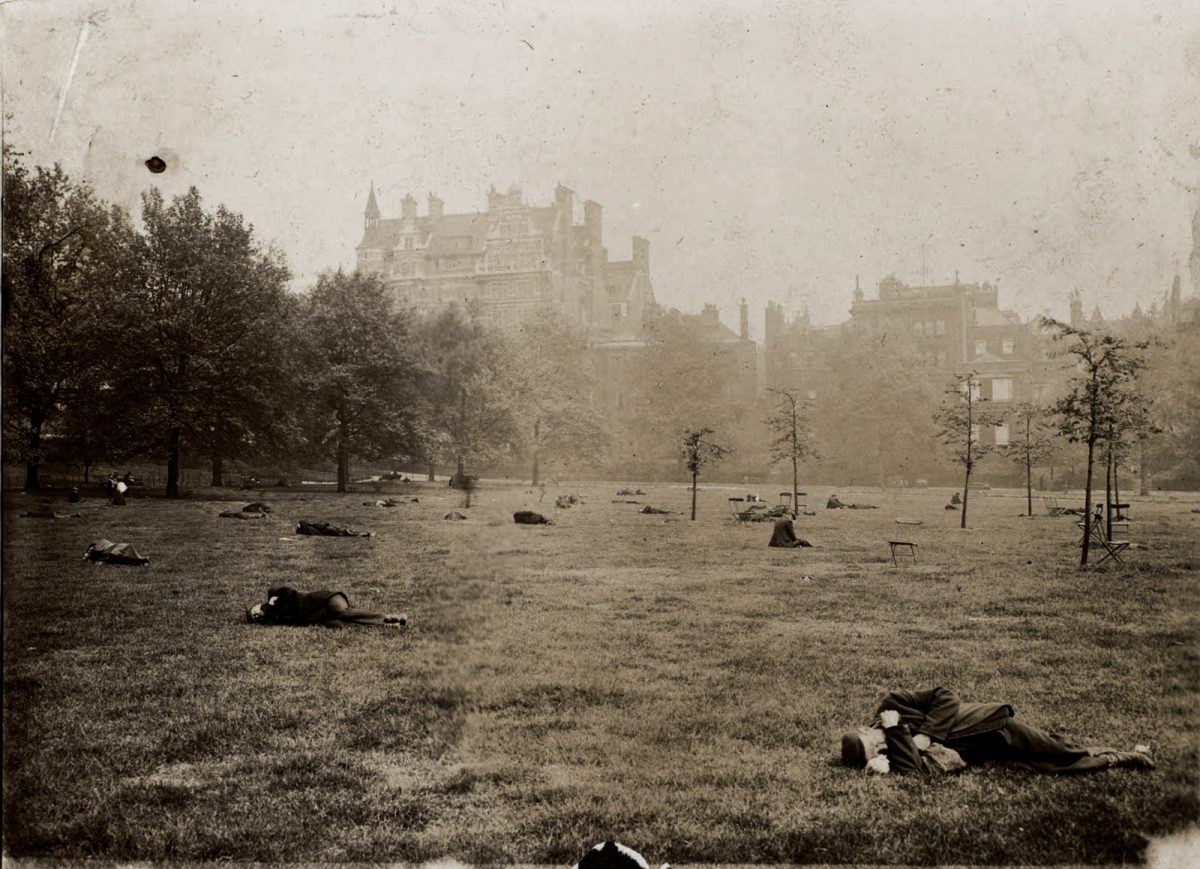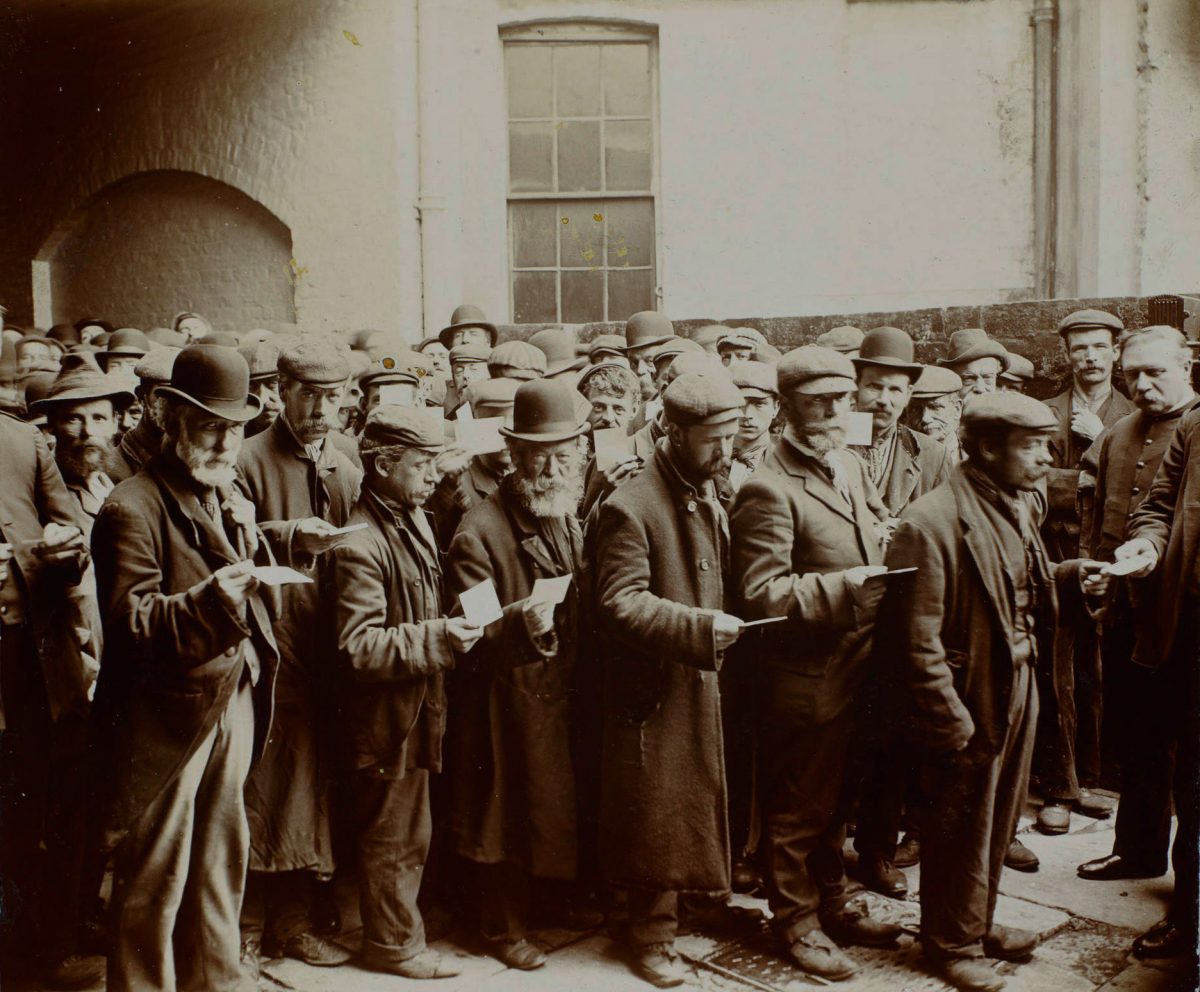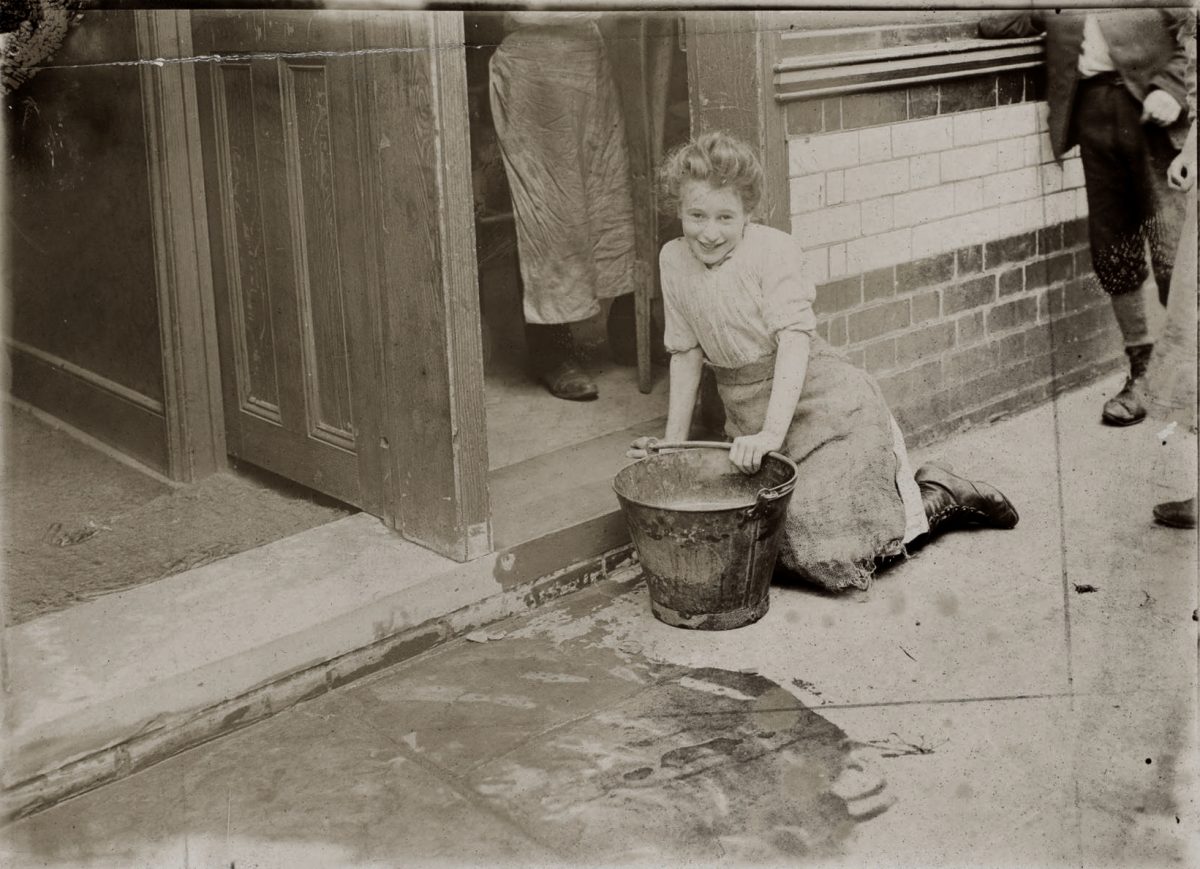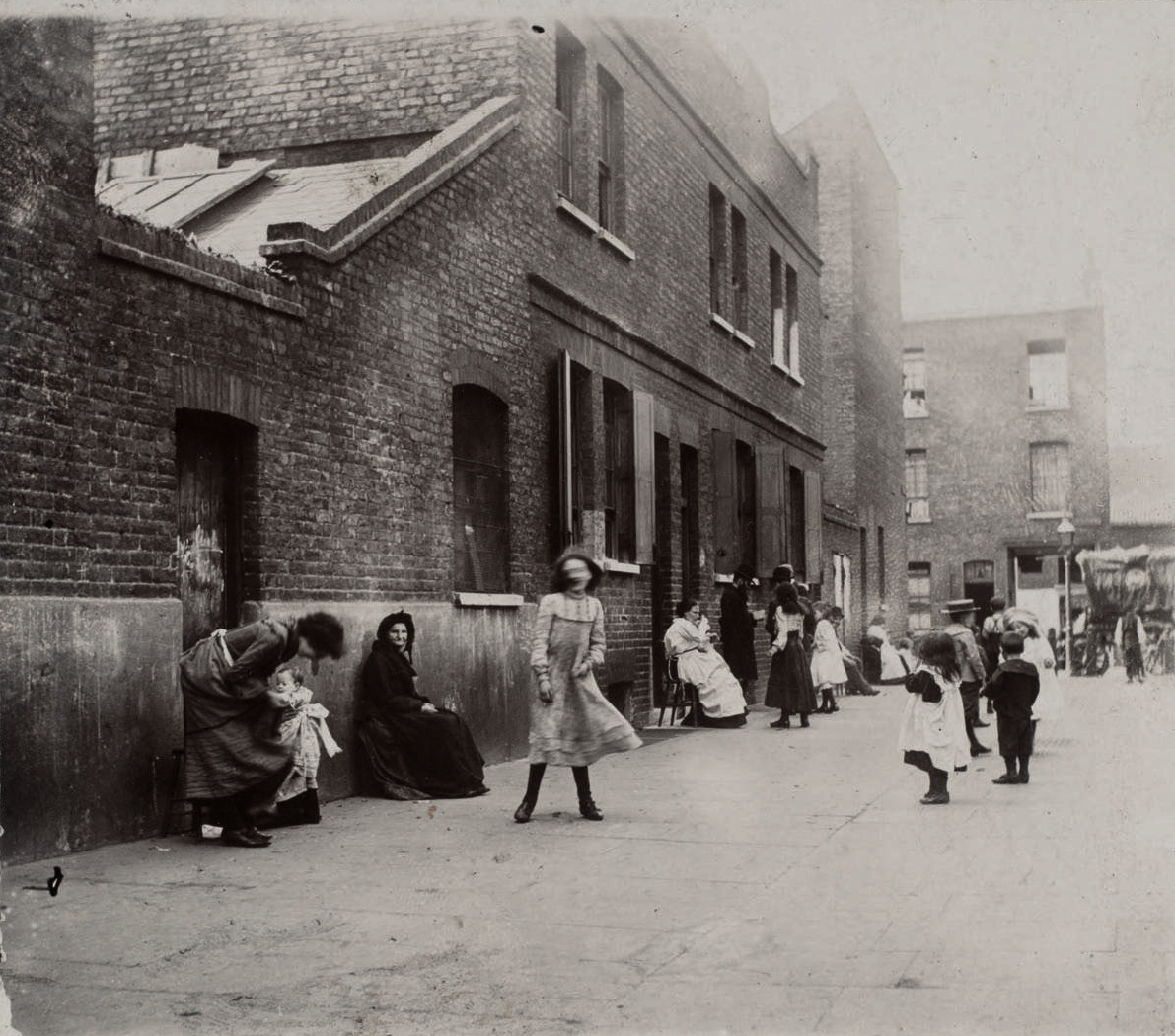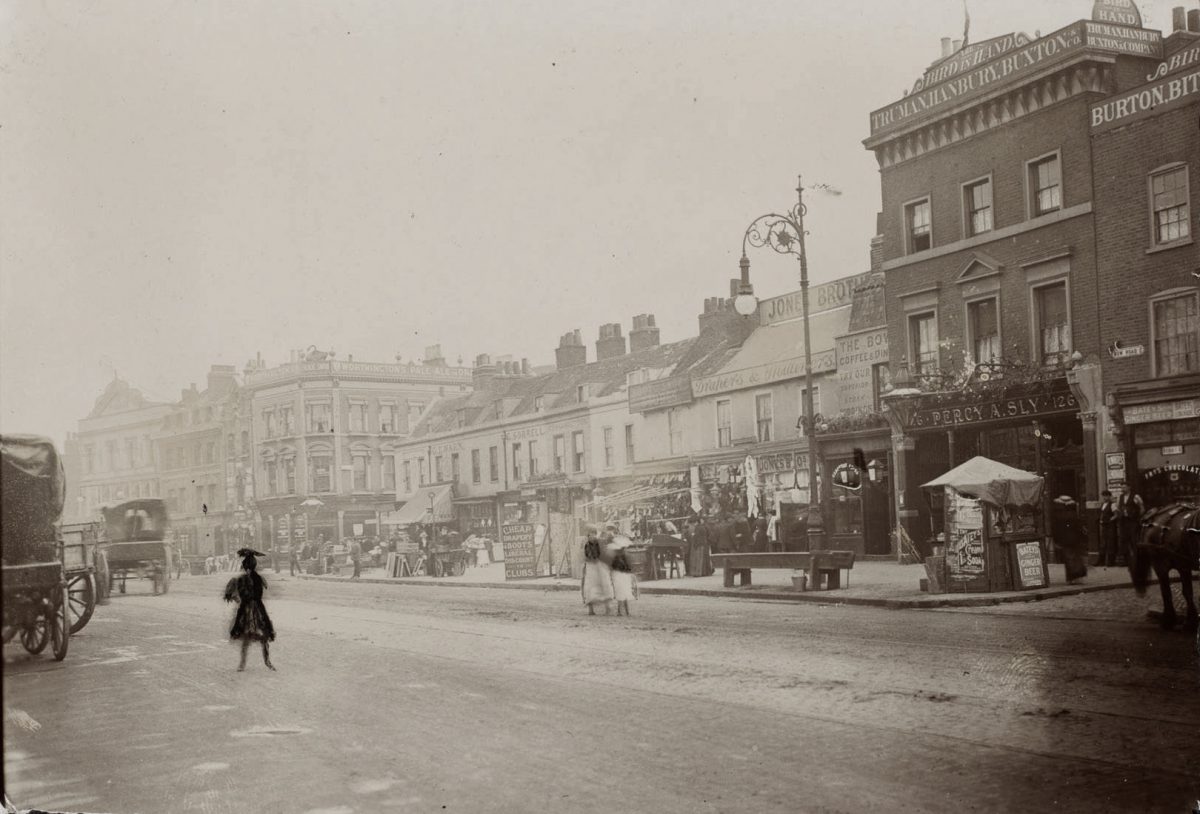In 1902 the American author Jack London visited his namesake city – at the time when it was still the largest in the world. In a book that became to be known as The People of the Abyss he described the time when he lived in the Whitechapel district sleeping in workhouses, so-called doss-houses and even on the streets. It was said that about half a million people were living in these awful and terrible conditions in Britain’s capital city. London took the photographs that illustrated his extraordinary book (between 1900 and 1916 the American writer took more than 12 thousand photographs). London was most disturbed by the number of “old men, young men, all manner of men, and boys to boot, and all manner of boys” who had no other choice other than to sleep on the streets. “Some were drowsing standing up; half a score of them were stretched out on the stone steps in most painful postures…the skin of their bodies showing red through the holes, and rents in their rags.”
London had trouble finding anyone to show him the East End:
“But you can’t do it, you know,” friends said, to whom I applied for assistance in the matter of sinking myself down into the East End of London. “You had better see the police for a guide,” they added, on second thought, painfully endeavouring to adjust themselves to the psychological processes of a madman who had come to them with better credentials than brains.
“But I don’t want to see the police,” I protested. “What I wish to do is to go down into the East End and see things for myself. I wish to know how those people are living there, and why they are living there, and what they are living for. In short, I am going to live there myself.”
“You don’t want to live down there!” everybody said, with disapprobation writ large upon their faces. “Why, it is said there are places where a man’s life isn’t worth tu’pence.”
“The very places I wish to see,” I broke in.
“But you can’t, you know,” was the unfailing rejoinder.”
According to Michael Shelden, George Orwell‘s biographer, the English writer had read London’s book while in his teens and greatly inspired as can be seen in Down and Out in Paris and London and the Road to Wigan Pier.
The People of the Abyss was published in 1903 the same year as his novel Call of the Wild was serialised – bringing London international fame. London later said: “Of all my books, the one I love most is The People of the Abyss. No other work of mine contains as much of my heart.”
You can buy fine art prints of thee incredible pictures in the shop.
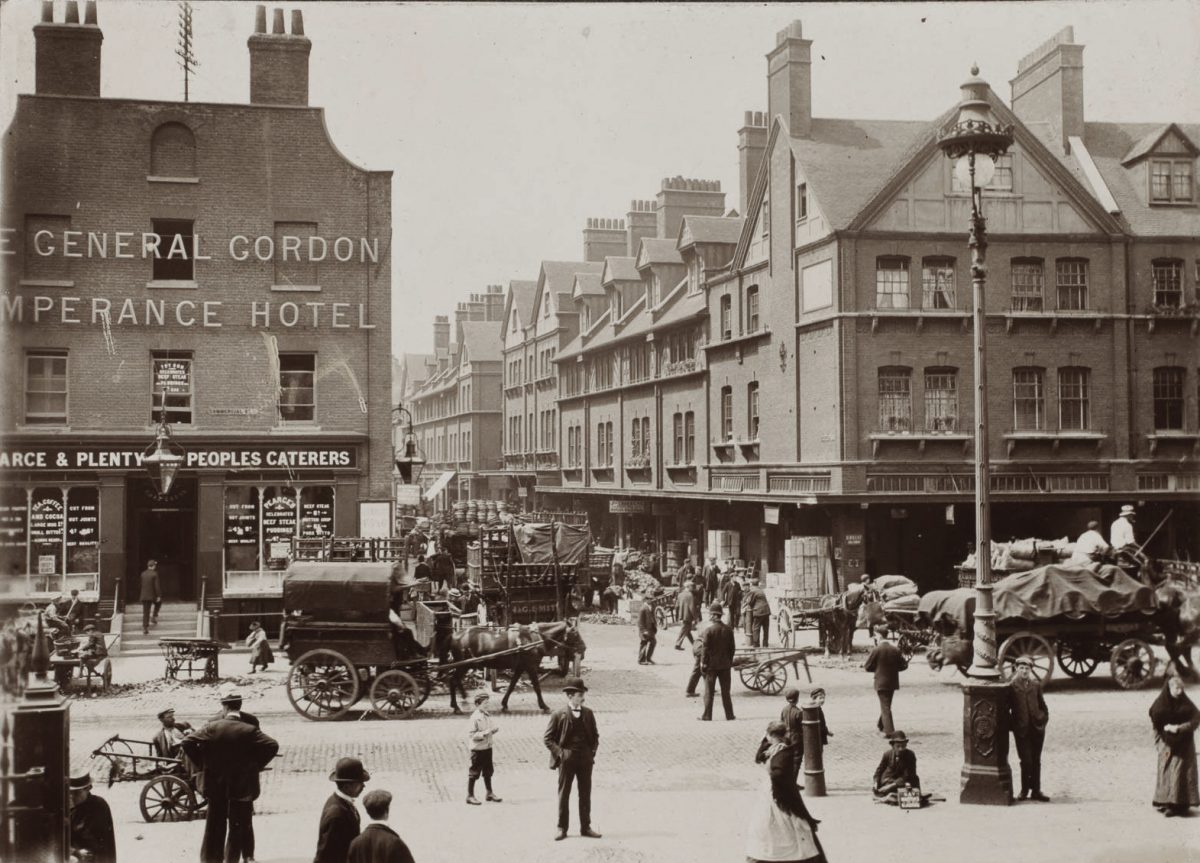
Spitalfields at the junction of Commercial Street and Brushfield Street. The building at the right is Spitalfields Market. To the left is a branch of the Pearce & Plenty cafe chain, with a sign for the General Gordon Temperance Hotel. Buy Prints.

Jack London
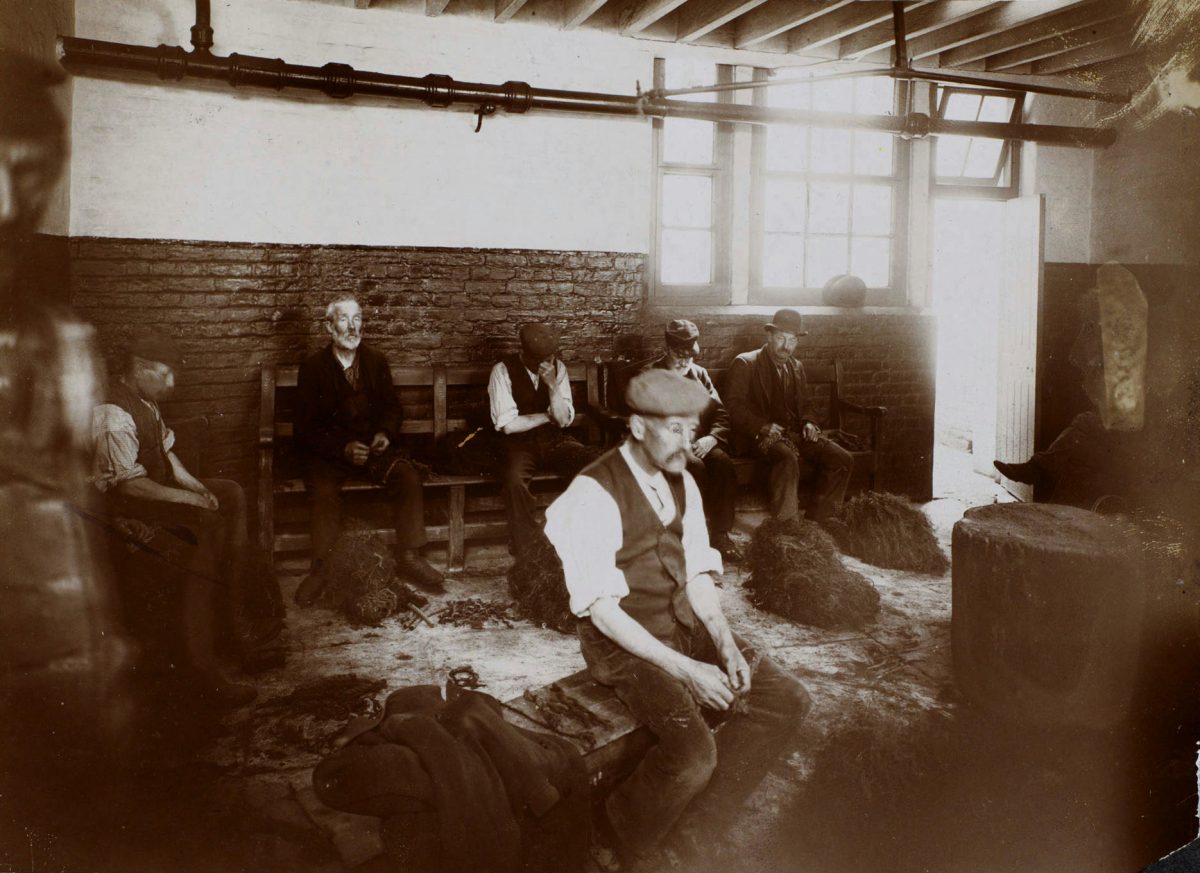
Men working in casual ward of workhouse picking oakum – teasing out of fibres from old ropes and was very hard on the fingers. Buy prints.

A street in Wapping
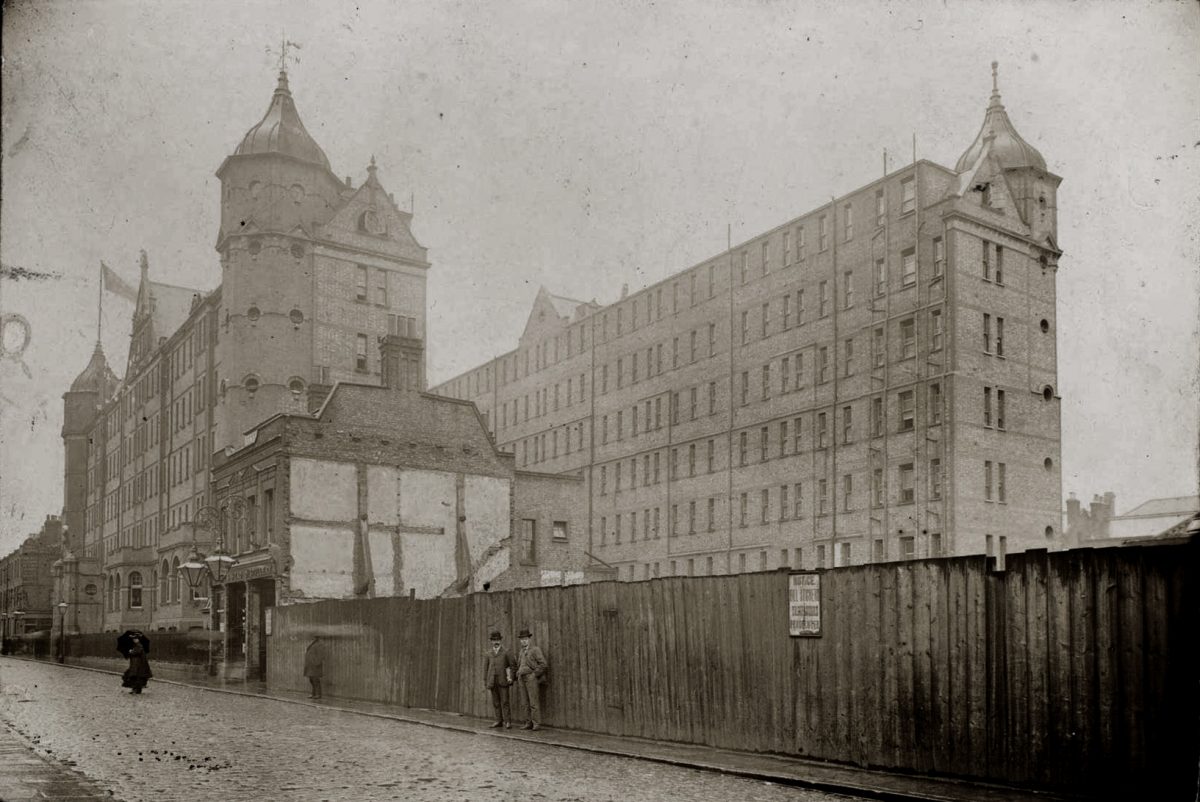
“Gigantic dosshouse” Rowton House, Fieldgate Street, Whitechapel

“A policeman shines a flashlight onto a young man sleeping on the sidewalk against a building. A sign displayed in a window to the left reads: “Truth The Weekly Newspaper.” Buy prints.
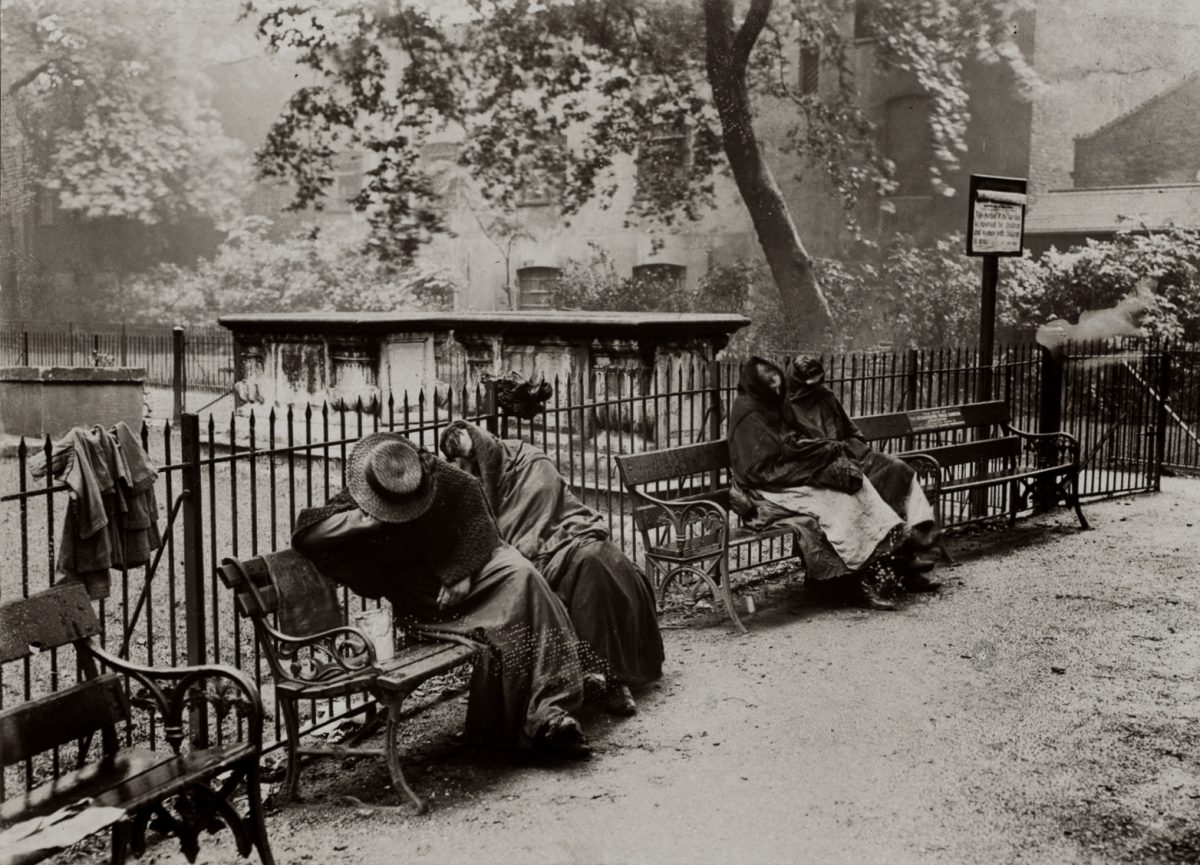
Homeless Women Spitalfields Garden (church yard of Christ Church)

Frying Pan Alley,(Situated close to Middlesex Street and Petticoat Lane market) Spitalfields

A group of men stand out on the stoop of a four-story brick building, while a few women and children walk by on the sidewalk. A sign over the entrance reads: “No. 1 Victoria Home for Working Men.” (original caption)
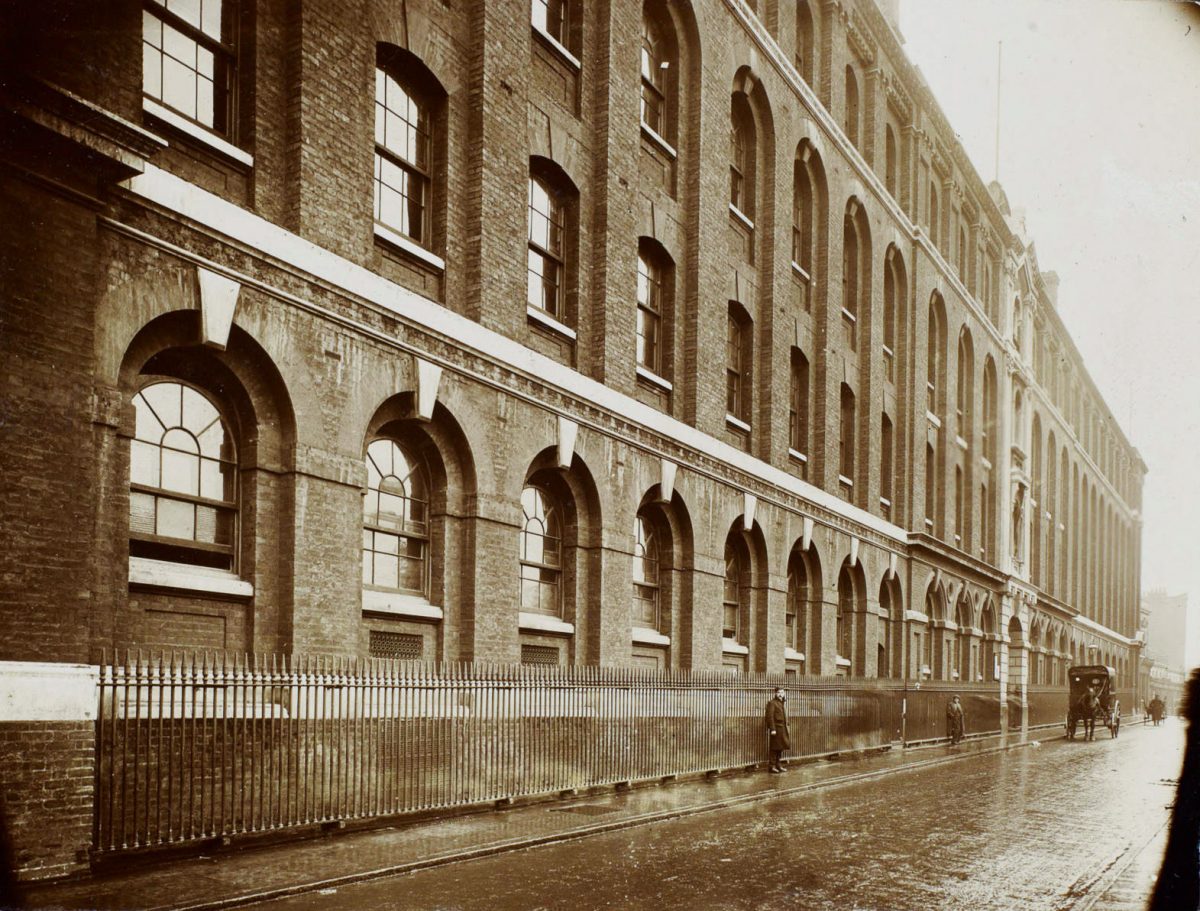
Whitechapel Infirmary -Wide view along the front of a long, four-story building with arched windows on the first floor. Two horse-drawn carriages are on the street in the distance. (original caption)
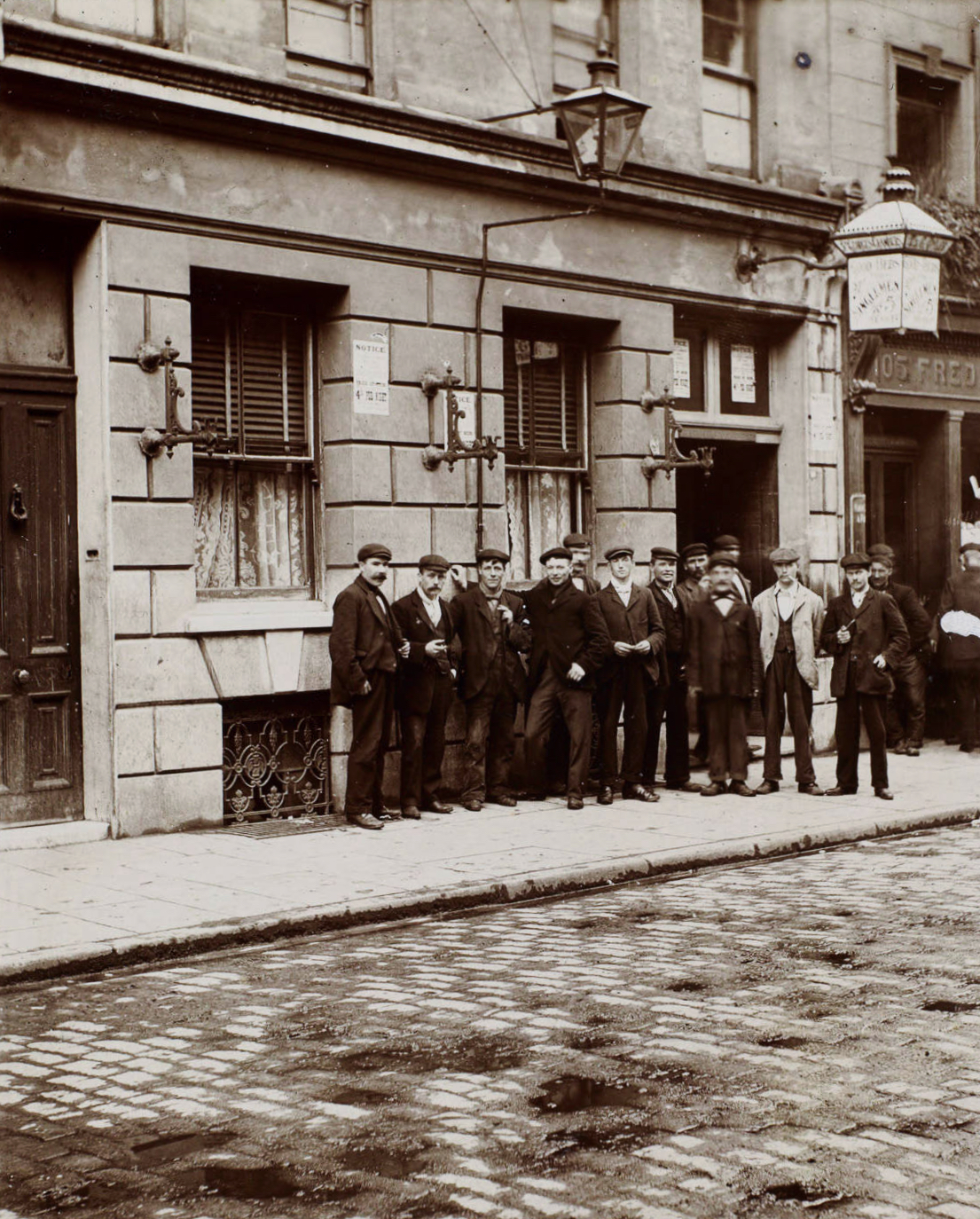
“Two relay system lodging, lodgers who have been on night work waiting till the beds of a doss house are vacated by men employed during the way.” – original caption
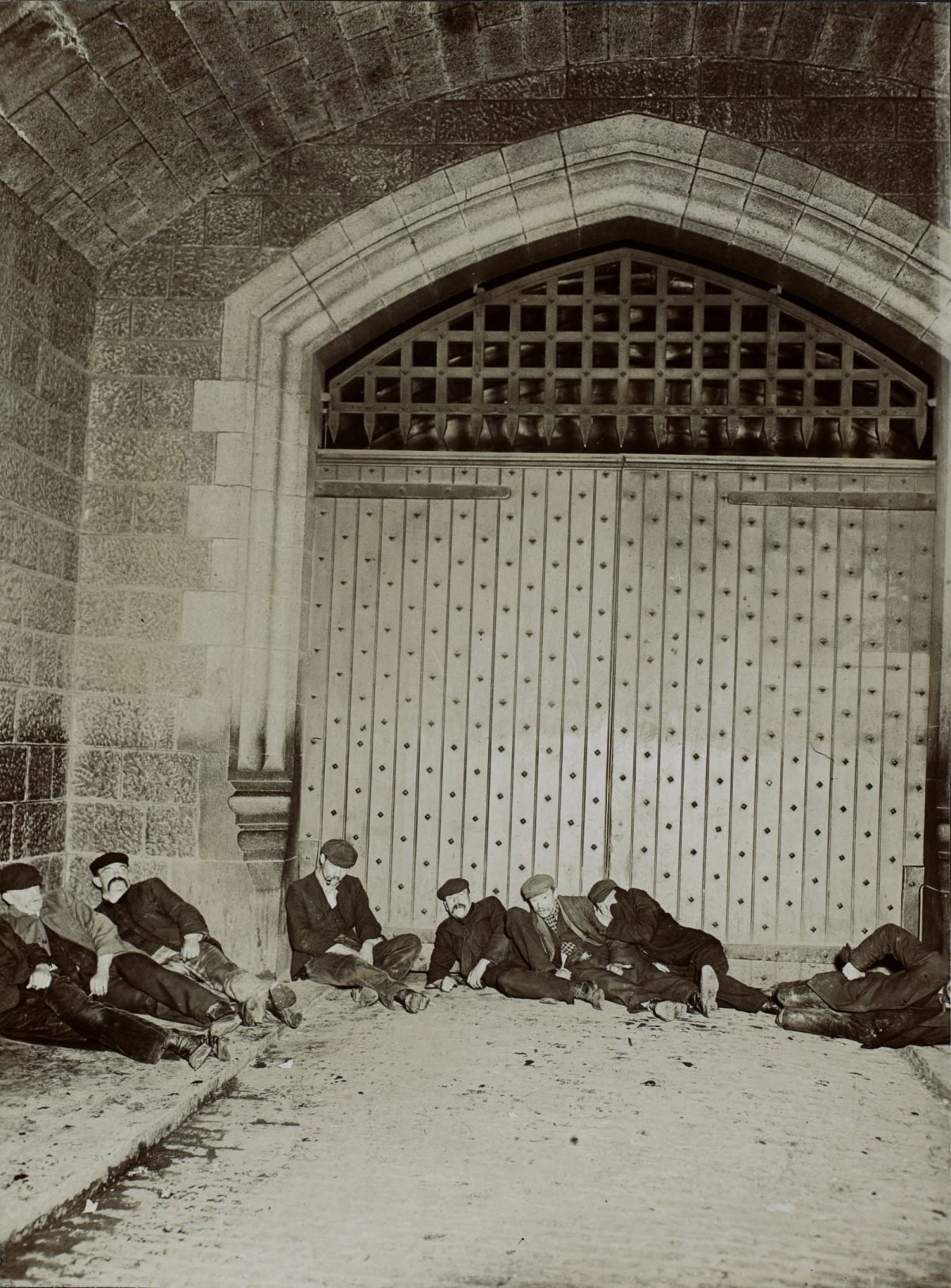
Under the arches of the bridges that span the Thames
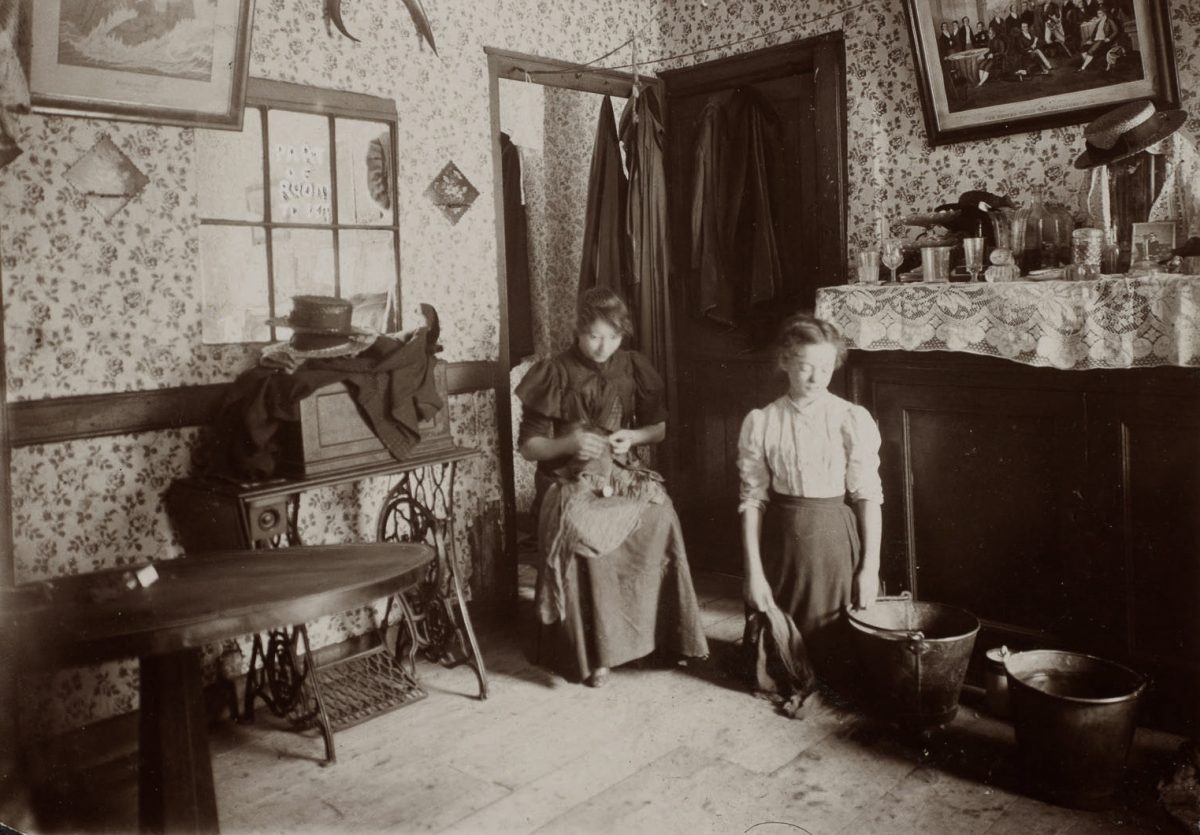
Part of a room to let. A typical East End home where the people live, sleep, eat all in one room.
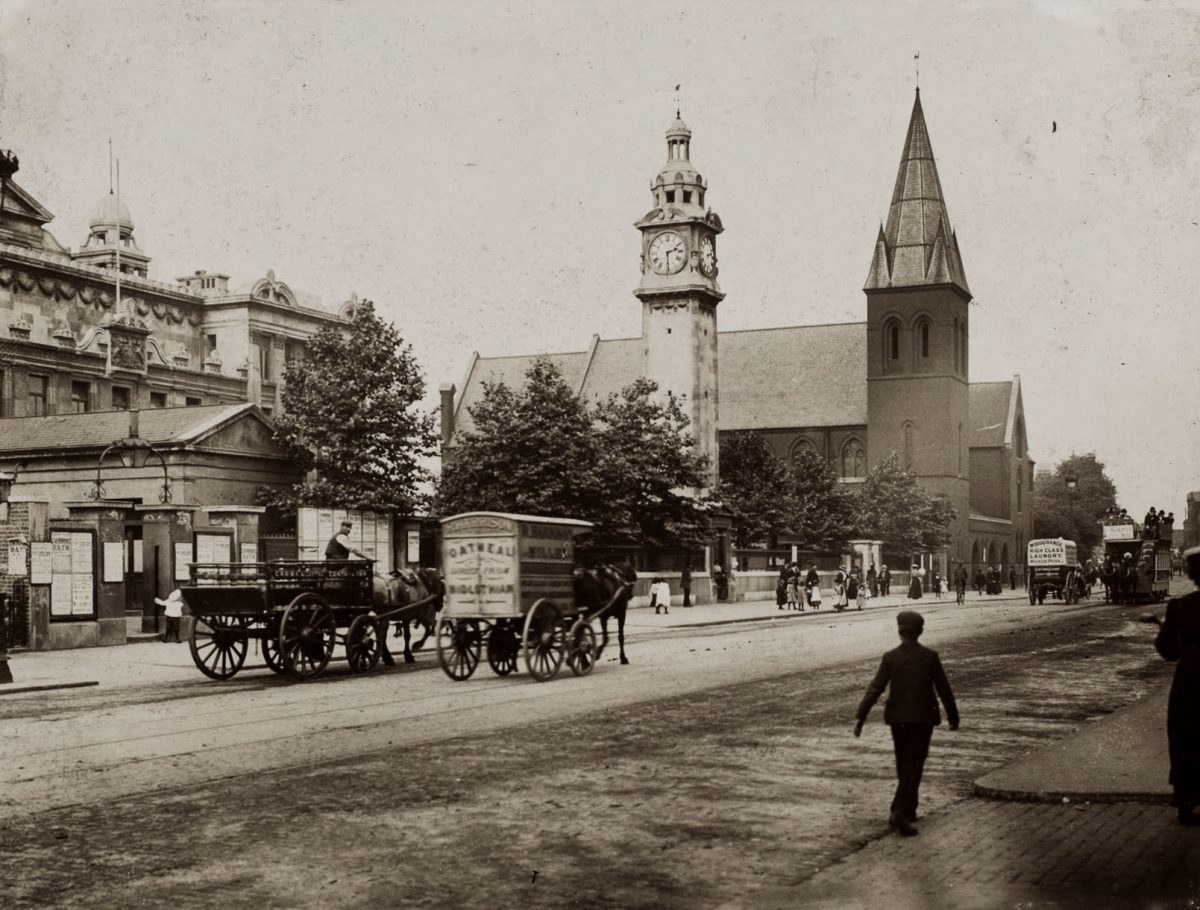
Mile End Road showing the People’s Palace
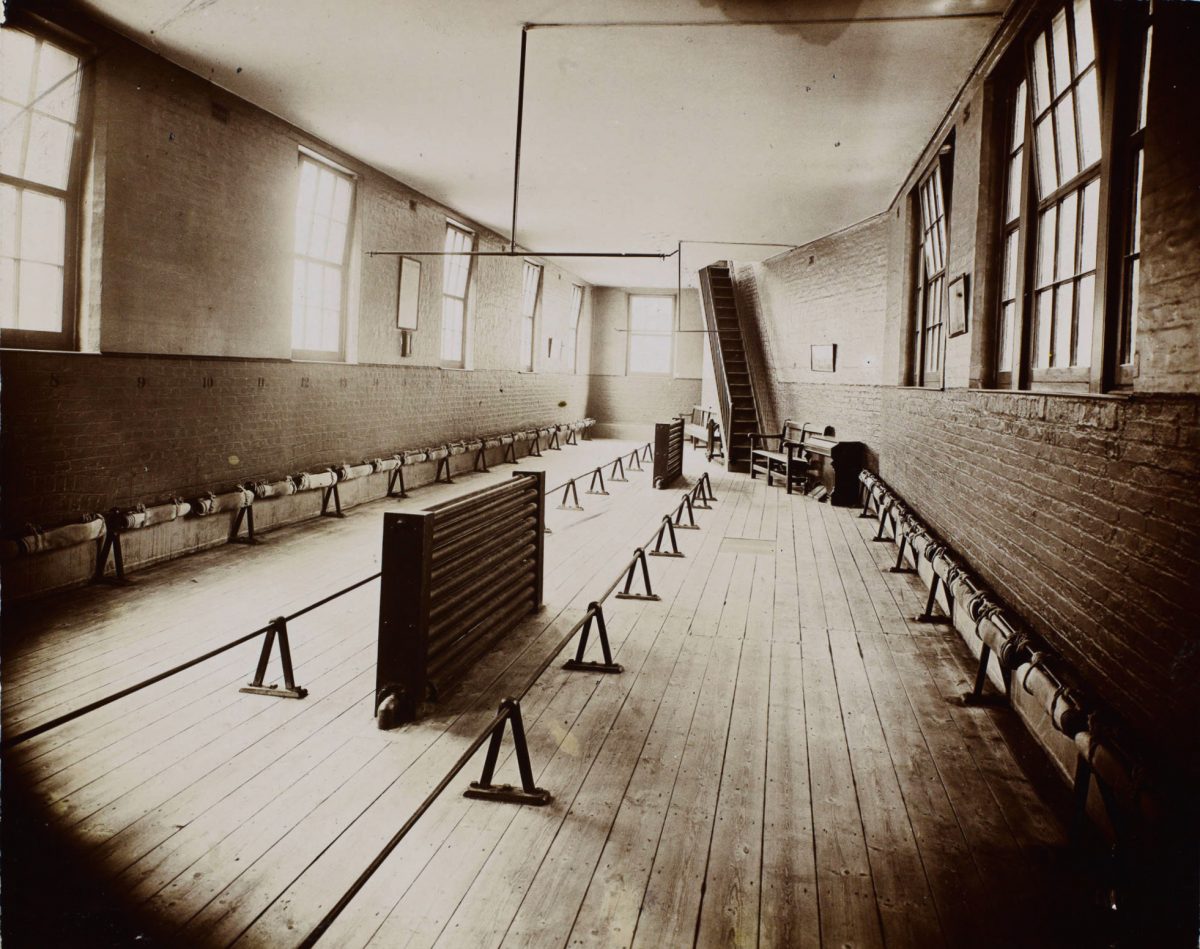
Casual ward of Whitechapel Workhouse above, beds rolled up on left and right
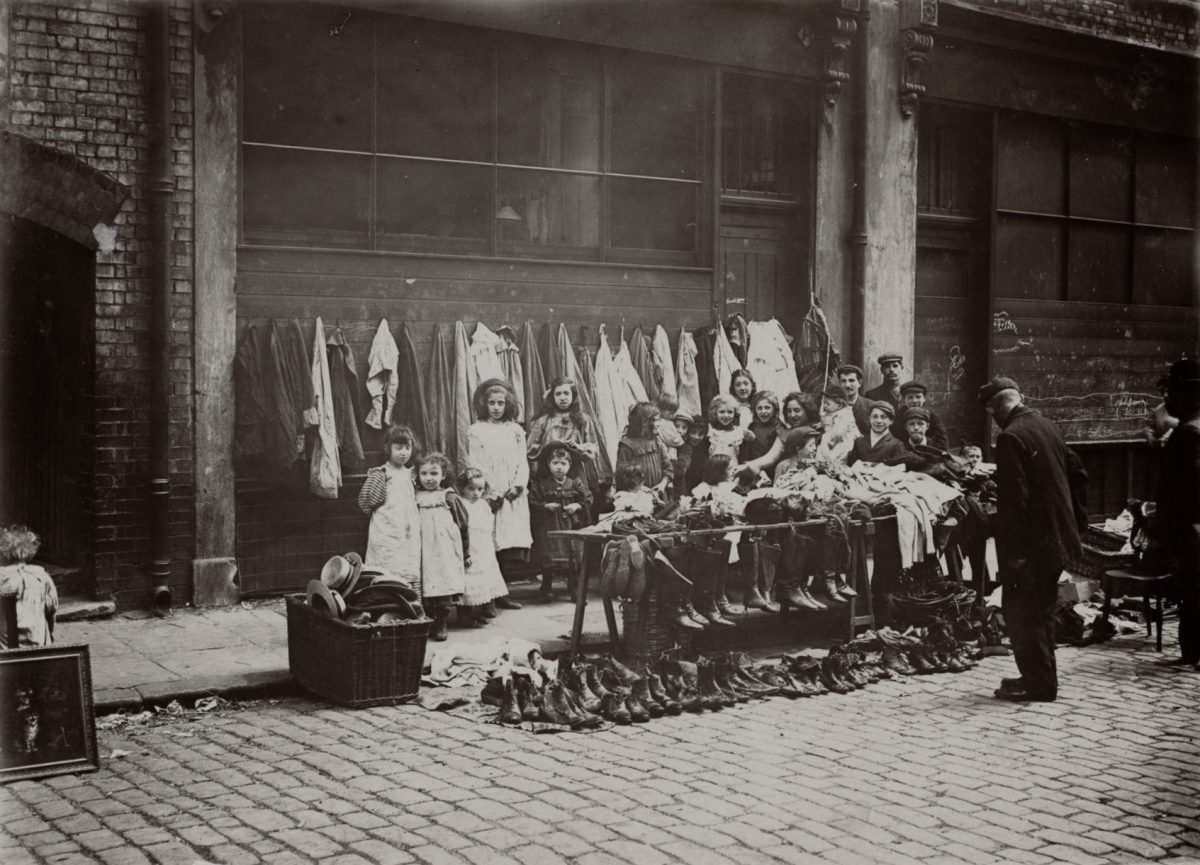
A shop where old clothes are sold – A group of children and a handful of adults, stand around a table that is covered with clothing. Jackets and coats are hung on an outside wall behind them, and shoes, hats, and other items sit on the ground around the table.(original caption)
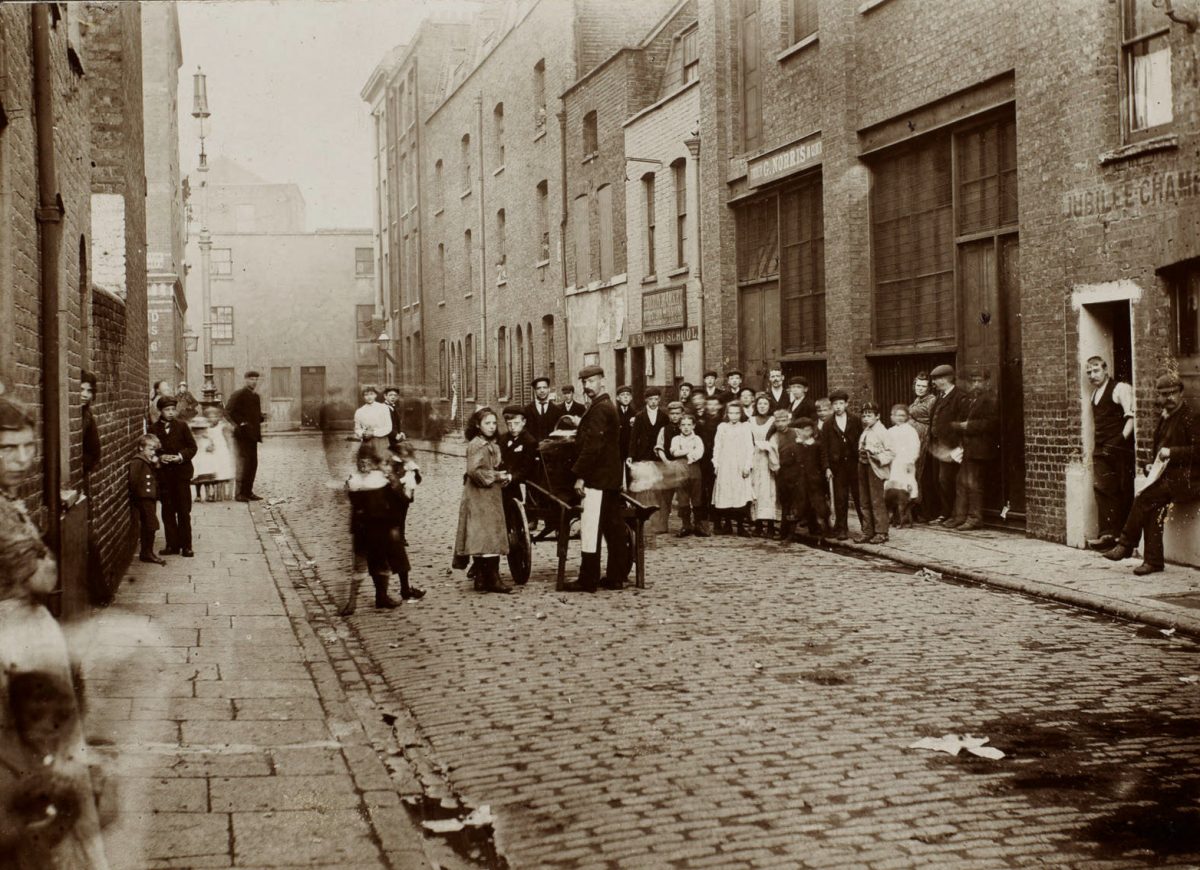
View in Hoxton. Buy Prints.
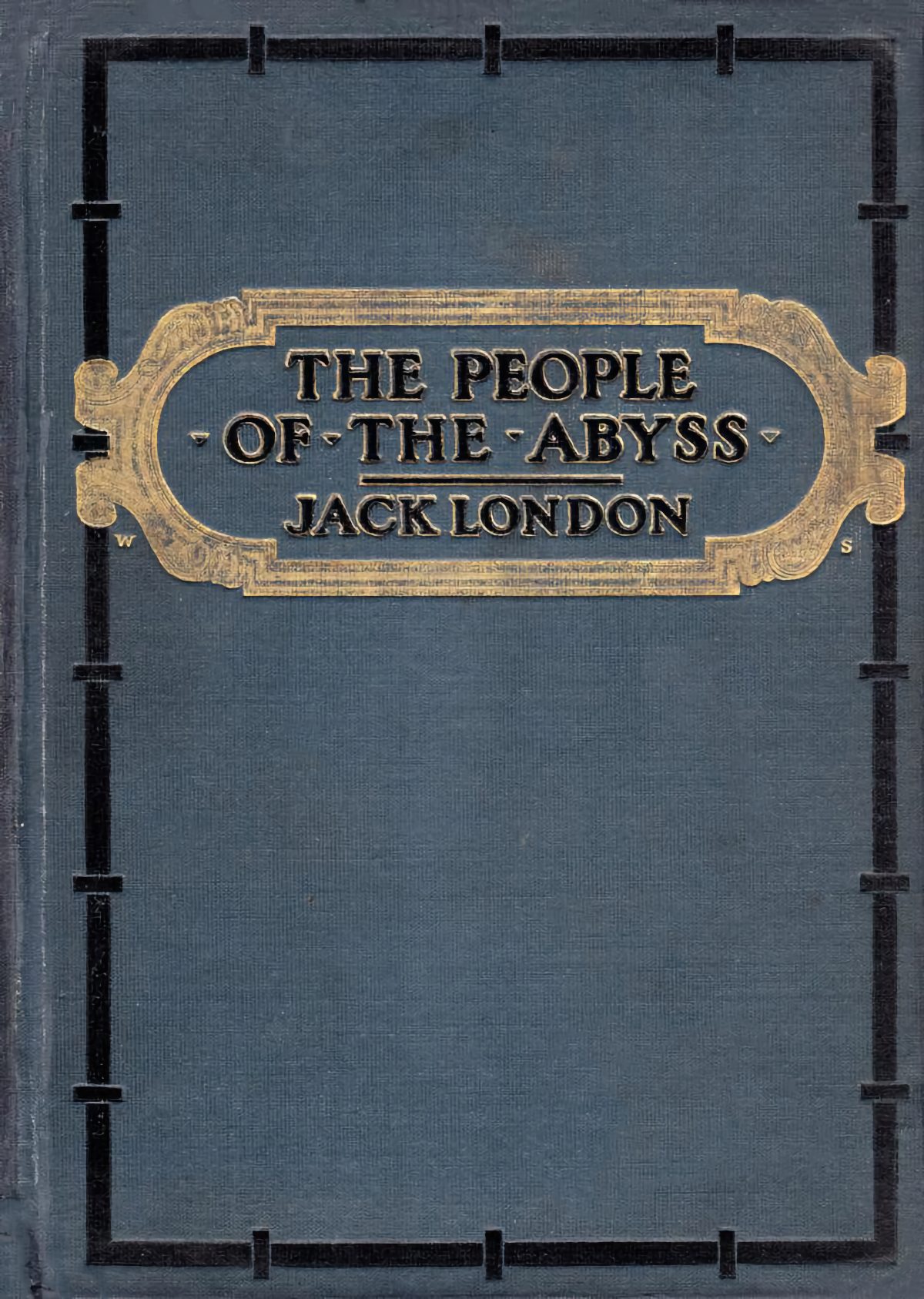
People of the Abyss cover
Buy fine art prints of these incredible photographs in the Flashbak Shop.
Jack London’s photographs are via The Huntington Library.
Would you like to support Flashbak?
Please consider making a donation to our site. We don't want to rely on ads to bring you the best of visual culture. You can also support us by signing up to our Mailing List. And you can also follow us on Facebook, Instagram and Twitter. For great art and culture delivered to your door, visit our shop.

